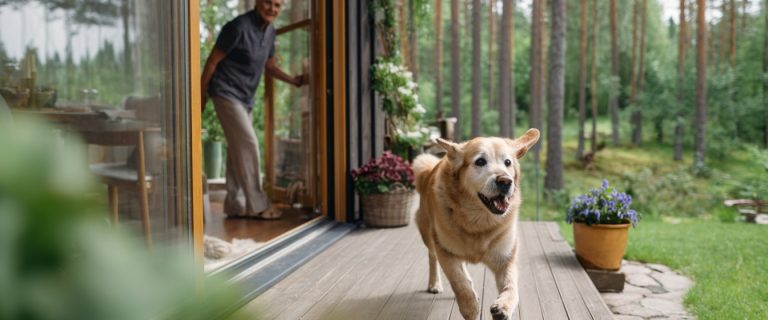Crate training your new puppy may sound mean, but it’s really one of the best things you can do for him.
Your new friend needs a place to call his own where he can go and be alone and rest.
A crate is that place for him.
But how do you get him to understand that the crate is his safe place?
We shared some tips for easy puppy crate training before, but since there are more than one way to train a dog, we thought we’d give you another angle!
Here are some more easy ways to get your new pup crate trained.
Related: How to stop dog zoomies
Crate Training Your New Puppy
Affiliate links included below. We earn a commission if you make a purchase, at no extra cost to you.
The Crate:
The essential piece in crate training your dog is, of course, a crate!
You can not use just any old crate. The crate has to fit the size of your dog.
He must be able to turn around 360 degrees and lay down however, not enough room so that if he has an accident in his crate that he can move far away from it. Keep fresh water, but no food. Dogs typically will not use their home as their bathroom. You want to teach your puppy that the crate is his home, not a punishment.
The idea is that he gets used to his crate so that he is comfortable going in it while you are away.
A crate prevents him from getting bored and getting into things like the garbage or chewing things he is not supposed to. If you have a large breed, check out our tips on finding extra large crates.
[embedpost postid=”24721″]
A Schedule:
This is just as important as the crate.
Place the crate in a high traffic area.
While you are home, put your pup in his crate for short periods of time. Each time leaving him in there longer and longer. You want him to be comfortable enough to be in there while you are not home.
Warning here!
He will cry and he will want to get out.
The most important part of crate training is to ignore these cries.
It sounds harsh and will be worse for you than it is for him. Taking him out every time he cries is only going to teach him that he will get out of his crate when he cries. He will cry when you are gone, and when you are gone, you will not be around to take him out.
[embedpost postid=”24094″]
Feeding:
You might be wondering how feeding goes along with crate training.
Crate training is all about the schedule. It will seem for a bit that your day is revolved around your pup and when he eats, when he goes out and making sure he goes out enough to avoid accidents. After feeding your pup, he will need to go out within 20 minutes to avoid accidents in the house and also to teach him that he does not relieve himself in the house.
Feeding is part of his schedule.
Having a puppy is so exciting!
He needs lot of love and attention and training. Have you ever trained a dog?
Do you have any tips that worked for you when you brought your new furry friend into your home?
Share your crate training tips below!
Share the love of training a new puppy with those who may be new to this.
Do you have any crate training tips to share? Tell us in the comments!
Author
-

Tabatha started her freelance content writing career well over a decade ago, years before joining the DogVills team. She loves writing about dogs (currently a beautiful Shepherd and a newly rescued pit bull) and sharing her experience with new owners. Tabatha also owns her own boudoir photography business and works as a school nurse. In her downtime, she loves hanging out with her children and husband in their Florida home.
View all posts



